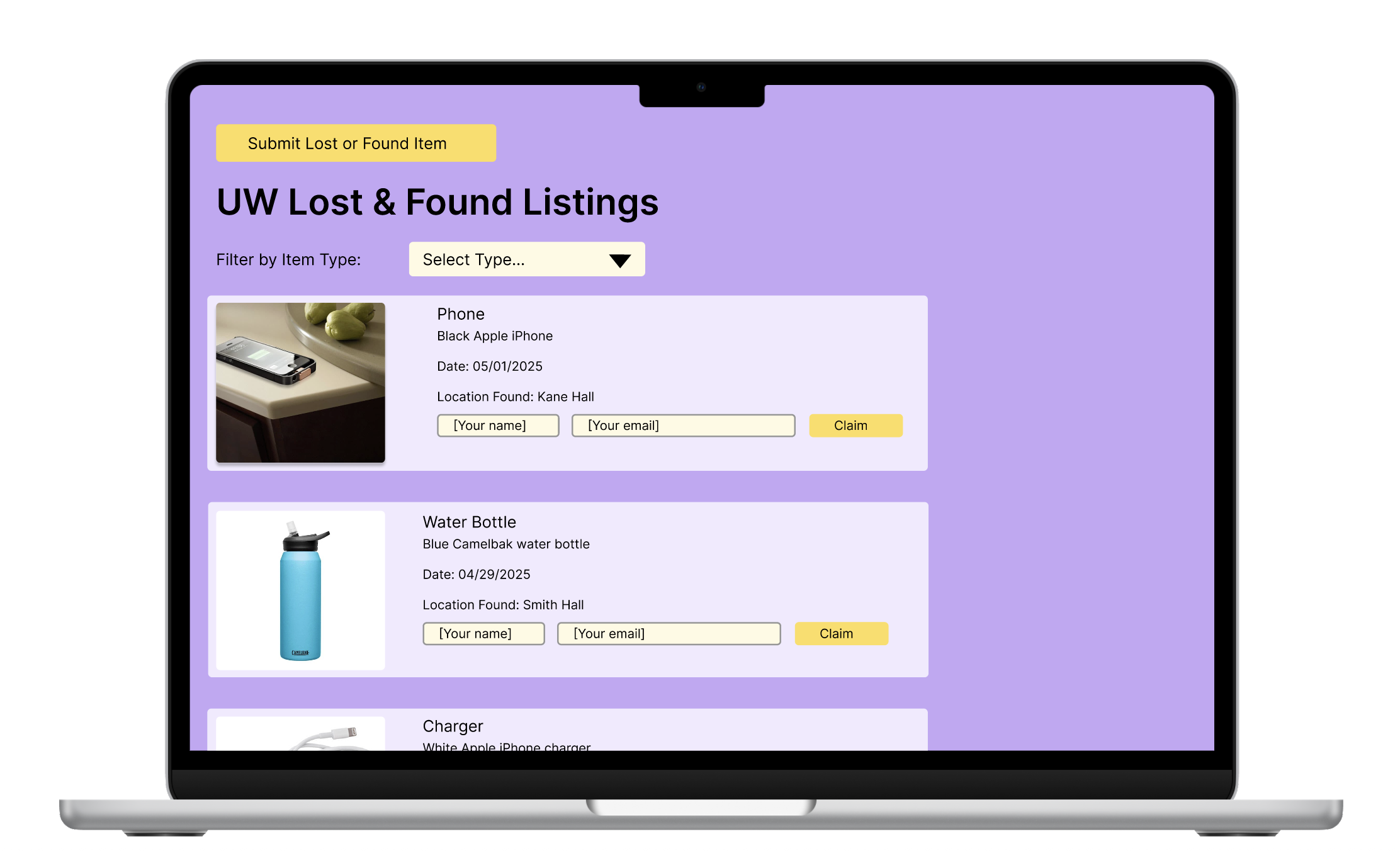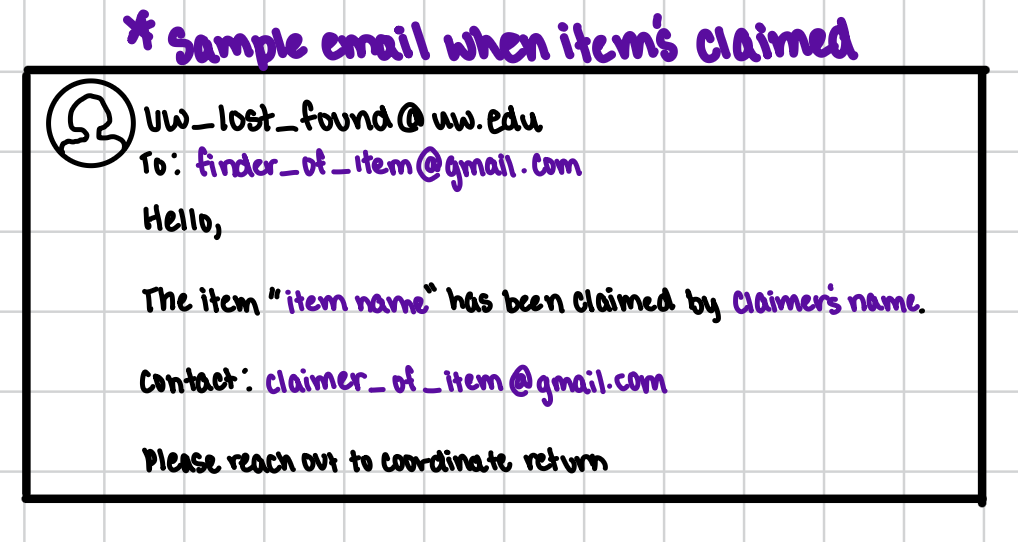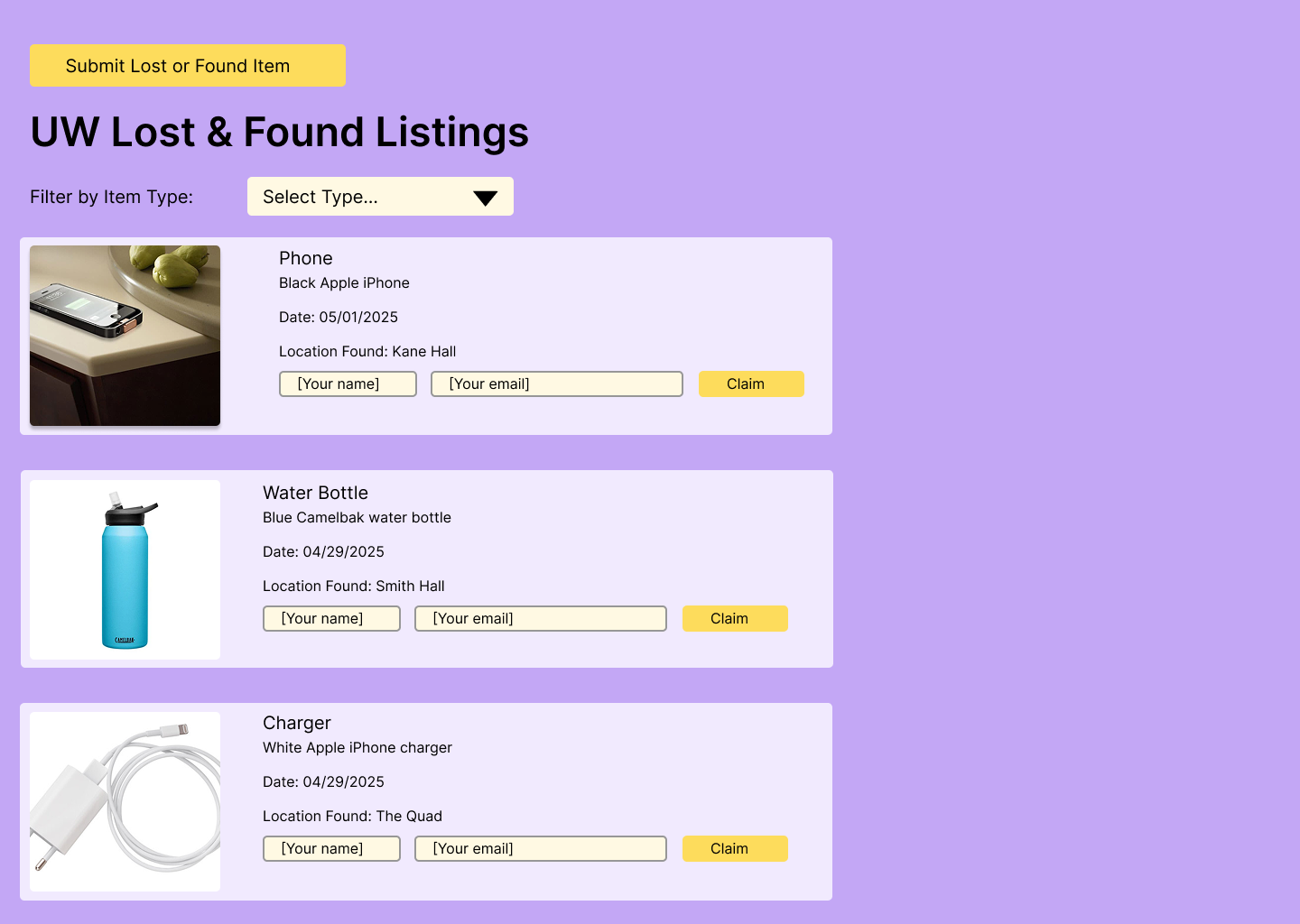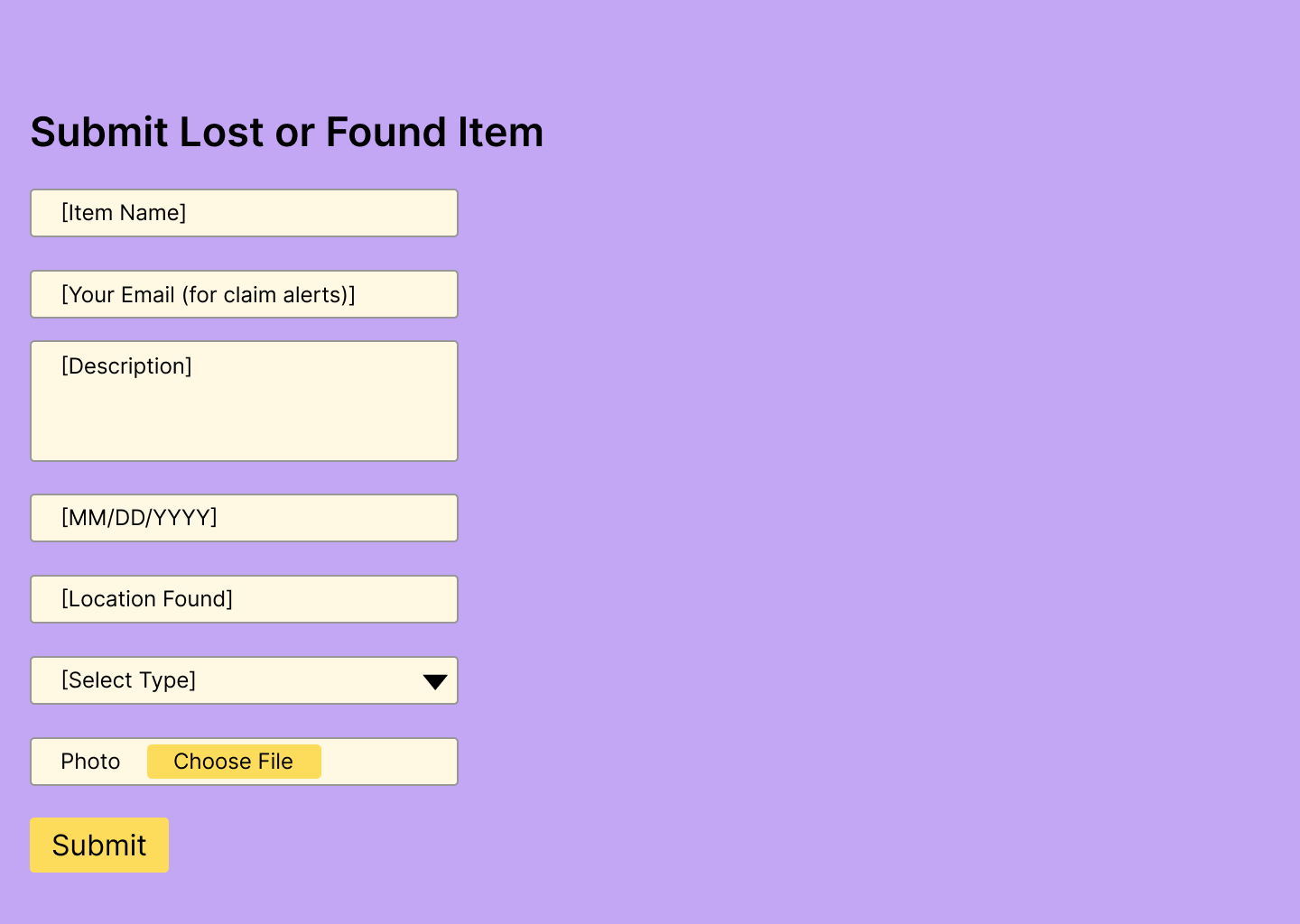UW Lost & Found
A web app to reconnect students with their lost belongings.
Overview
SUMMARY
I served as a UI/UX designer and developer for a project addressing the lack of a centralized lost & found at UW, turning student needs into a working prototype and coded Flask web app.
The result is a simple platform where students can post, browse, and claim lost items with real-time email notifications.
ROLE
UX / UI DESIGNER
UX/ UI RESEARCHER
DEVELOPER
TIMELINE
SPRING 2025
4 WEEKS
SKILLS
USER RESEARCHER
INTERACTION DESIGN
WIREFRAMING + PROTOTYPING
What is UW Lost & Found?
At the University of Washington, students lose items every day — Husky Cards, laptops, water bottles, and more. But without a centralized system, most rely on chaotic Reddit posts or Snapchat stories making it difficult to recover their belongings.
UW Lost & Found bridges this gap by offering a single platform to post, browse, filter, and claim lost items. With real-time email notifications and a simple UW-themed design, the app makes reuniting students with their belongings faster, safer, and more reliable.
CONTEXT
Create a digital product that helps University of Washington students recover lost items quickly
CHALLENGE
SOLUTION
UW Lost & Found is a simple, student-friendly platform where items can be submitted, displayed, filtered, and claimed. With real-time email notifications and clear item status, it makes it fast and safe to reconnect students with their belongings.
A hub for lost items
Understanding the User
SUMMARY OF USER RESEARCH
Because this was a class project, I relied on assumptions and peer feedback which revealed:
Students valued real-time email notifications for convenience and efficiency.
Students needed a clear claimed/unclaimed status to avoid confusion.
PAIN POINTS
Chaotic communication → scattered across Reddit, Snapchat, and word-of-mouth
Slow updates → students miss items without alerts
Unclear ownership → hard to know if an item is still available
Lack of trust → unsafe or embarrassing to share personal contact info directly on social media
How might we create a centralized platform that reduces chaos while providing real-time updates, and protects students’ privacy when reporting lost items?
DESIGN QUESTION
USER JOURNEY
Goal: Find or report a lost item quickly between classes
Step 1: Visit UW Lost & Found site
Step 2: If user has lost an item → Browse or filter listings
Step 4: Claim an item → Poster receives notification email
Step 3: If user has found an item → Submit a lost item form
The Design Process
PAPER WIREFRAMES
Each listing contains the item’s photo & information with an option for browsers to claim the item at the bottom.
The submission form to post a found item.
A sample email that the poster would get when an item is claimed
DIGITAL WIREFRAMES
Homepage
Submission Form
Sample Email
Refined sketches into clean, consistent layouts in Figma.
Improvements: Added better spacing, consistent input fields, and filter drop-downs.
Mockups
Applied UW branding with purple/white theme
Included sample photos for listings
Improvements: Increased button size, bolded headings
Finalizing the Design
HIGH-FIDELITY PROTOTYPE
Connected mockup screens in Figma to simulate real interactions
Added clickable flows for posting, browsing, filtering, and claiming items
Ensured navigation between screens was smooth and intuitive
Prepared the design for development
Improvements: Built a popup confirmation: “Claimed! The item poster has been notified and you should receive an email shortly.”
USABILITY CONSIDERATIONS
Color contrast & clarity → Used UW purple/white with high-contrast text and larger fonts. Added borders and shadows to inputs, buttons, and cards.
Form labels → Clear labels in every input field; added item type categories on cards.
Feedback & error prevention → Popup confirmation reassured users, required fields (Name + Email) prevented incomplete submissions
Final Product
Demo Video
The final product was fully coded in Flask, not just designed in Figma. While less visually polished than the high-fidelity prototype, it functioned end-to-end with real submissions, filters, email notifications, and image uploads.
Class Skit Demo Video
A walkthrough of the fully coded Flask app, featuring an example scenario of a student submitting and claiming a lost item, with real-time email notification.
Reflection
IMPROVEMENTS
Fidelity gap → The flask version didn’t fully match the polish of the Figma mockups , a reminder of the design-development gap.
Visual polish → Text and buttons ended up smaller than ideal, I’d enlarge them for readability and accessibility.
Email integration → I used my personal email to register for EmailJS. For a real deployment, I’d set up a dedicated uw-lost-found@gmail.com account.
TAKEAWAYS
Impact → Centralized lost & found solved a real need
What I learned → Strengthened skills in full-stack development, integrated EmailJS API for real-time alerts, and designed with accessibility in mind.
NEXT STEPS
Authentication → Add UW NetID login to secure submissions and prevent spam
Admin support → Partner with UW to integrate into official services
Enhanced notifications → Expand alerts beyond email to SMS/text
Scalability → Transition from CSV storage to a robust database








